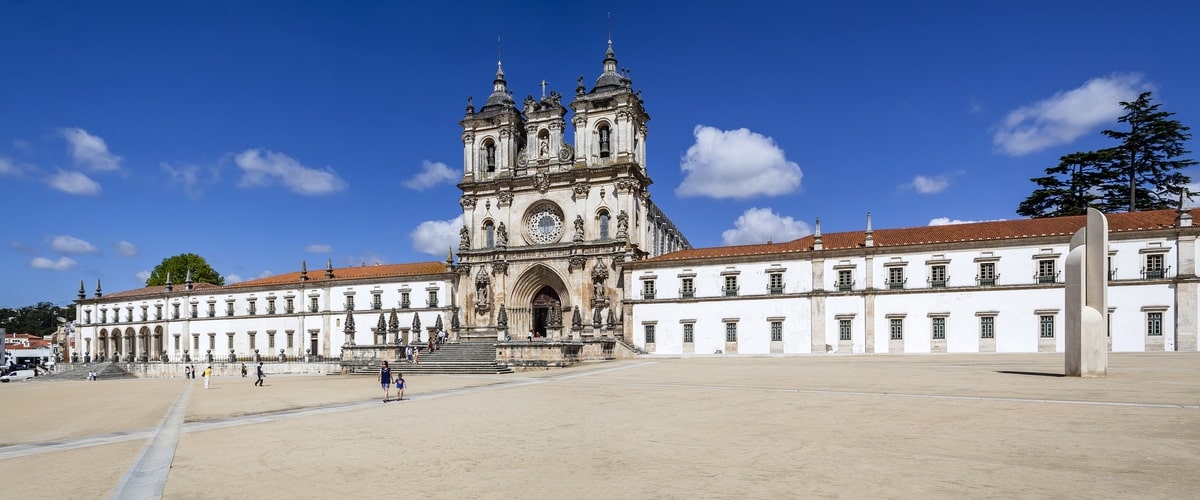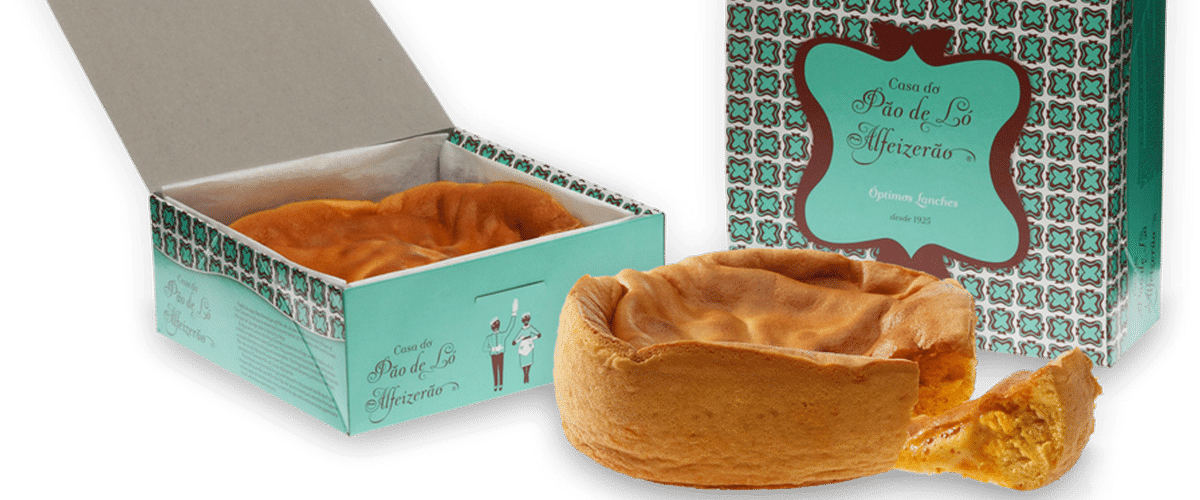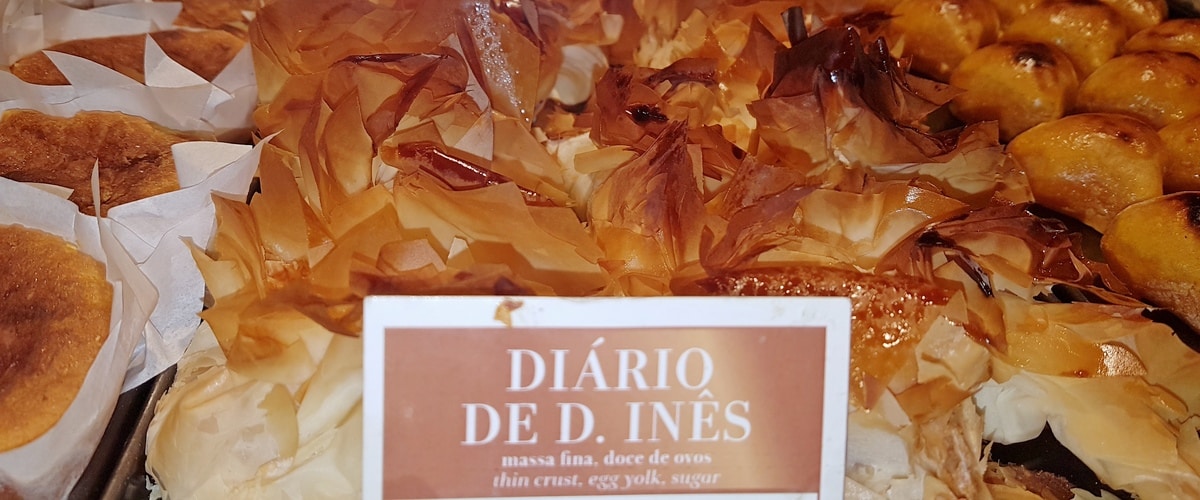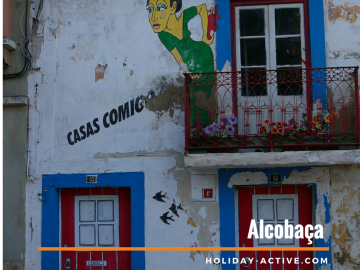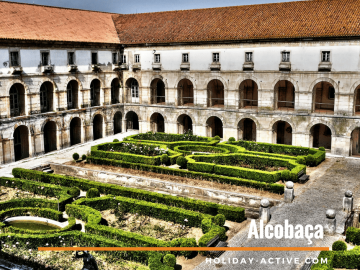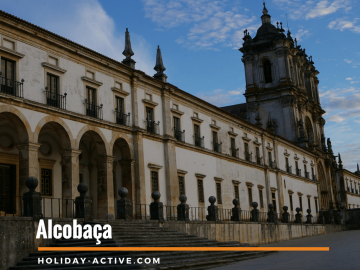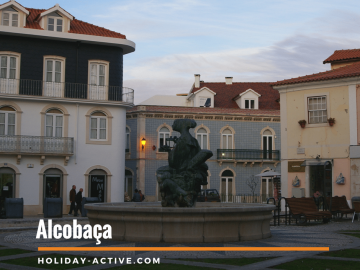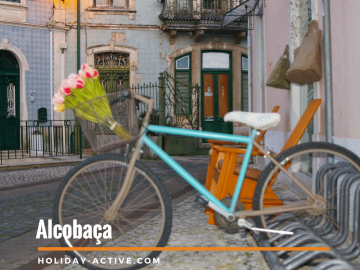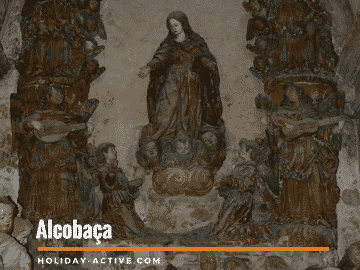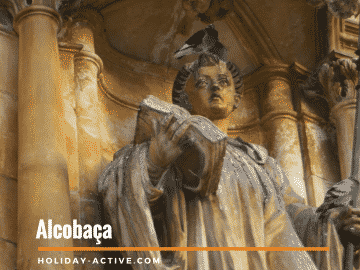Alcobaça
D Afonso Henriques donated the lands of Alcobaça to the Cistern Order as a promise settled for conquering, in 1147, the land of Santarém from the Moors.
The Cistercian Order is based on the teachings of S Benedict, an order that abides by its work and the total absence of riches in the quest for modesty, humility, detachment from worldly goods and service to God.
The Cistern Order greatly contributed to the growth of this estate. They introduced new cultures and forms of agriculture – Today, Alcobaça is still one of the largest national fruit producers.
In 1178 Friar Bernardo de Claraval, the founder of this order began building the Monastery of Alcobaça or Royal Abbey of Santa Maria, now classified as a World Heritage Site by UNESCO.
What to visit in Alcobaça
Monastery of Alcobaça
The Baroque style facade of the Alcobaça Monastery is 42m high and over 25m wide. Two marble sculptures represent S. Bento on the left and the right, St. Bernard. Above them the statues of four cardinal virtues: Fortress, Prudence, Justice and Temperance.
Between the two Bell Towers, the image of the Virgin, Patroness of all the abbeys of the Cystine Order.
The church
The church is formed by a central nave, two aisles and a transept, thus creating the image of a cross, better known as a Latin cross plant.
The church and its ornamentation is simple and spared according to the principles of the Cystine Order, none the less it is still imposing for its grandeur. In the Middle Ages, it was believed that one would get closer to God by making the churches so high
The symbols that exist on the stones are the marks left by the masons that built the Monastery of Alcobaça, their signature
The tombs of Pedro and Inês are prominent in the Alcobaça Monastery and display a remarkable and detailed craft. In Pedro’s tomb, we find a rosette, divided into two circular bands, the Wheel of Life (outer) and the Wheel of Fortune (inner) where the life scenes of the two lovers are represented. On the side faces of the tomb are depicted scenes from the life of St. Bartholomew, his patron
The tomb of D. Inês de Castro, depicts episodes of the Bible with the final judgment at the foot of the tomb and the scenes of the life of Jesus Christ from his birth to his crucifixion, on the side.
The New Kitchen
Several changes and additions were made to the Monastery of Alcobaça over the course of time being one of the most unique the new kitchen created by changing the eating habits of the monks, who by the imposition of the Cistern Order could only eat meat when in the ward. In the year 1666, Pope Alexander VII authorised the consumption of meat three times a week. This authorisation triggered a radical change in the customs of the monks, their small kitchen being technically poorly prepared, forcing the construction of a new one.
In the background, a tank through which the water diverted from the Alcoa River flowed. From here the water was taken for daily kitchen use and here live fish were placed to be cooked later.
Refectory
Above the portal, the Latin inscription “Consider that you eat the sins of the people.”
Meals were taken in silence; one could only communicate through a signal code. During mealtimes, a monk would go up to the pulpit and read sacred texts aloud.
Of the many doors in this room, the most singular is the narrowest. It is called the “pass the plates” and served to pass the dishes and food to the refectory. There is a tale regarding this narrow door. It is said that it served as measuring gauge. Dissauing the monks to give in to the sin of gluttony. If he couldn’t get through it, he couldn’t fetch his meal
D Pedro e D. Inês - A love Story
This is a story worthy of Shakespeare’s Romeo & Juliet. It is the tale of forbidden love between D Pedro and Inês de Castro, lady-in-waiting to his wife
Pedro and Inês contrived their romantic encounters in the gardens of Quinta das Lágrimas and would eventually marry in secret
D. Afonso IV, Father of D. Pedro fearing D. Inês de Castro’s influence, due to her Castilian lineage, would be dangerous to the Kingdom, ordered her assassination in January 1355 at the Convent of Santa Cruz in Coimbra, where had she retired with her children
Deranged by pain, Peter led an uprising against his father. When King, he then had the body of Inês brought to court so to be paid due homage and recognised as Queen
In the Alcobaça Monastery, the tombs of D. Pedro I and D. Inês are placed opposite each other so that they can meet again on the day of the Resurrection.
Garden of love
Tribute to the love of Pedro and Inês, this public garden has on its walls hundreds of small lockers where today’s lovers can leave their vows of love, written on papyrus that can be bought in the various local shops, together with 2 keys.
Chita (Cloth)
The cloth named as Chita is a printed cotton cloth that was brought from India to Europe by the Portuguese in the 15th century.
Specifically the Chita de Alcobaça features wide stripes with varied figures such as birds, animals, flowers, fruits, human figures, nests and tropical fruits.
What to Taste
The “Pão de ló” cake, took its name from the place where it is made – Alfeizerão.
Locally produced fruits such as ‘Rocha’ Pear which is a native variety of Portuguese pear and the Apples of Alcobaça
Ginja of Alcobaça
The tradition of ginga (Bitter cherry) liqueur comes from way back in time when the Cistercian friars used to distil this fruit and sell it in the Monastery as a digestive syrup and a remedy for colds.
Pastelaria Alcoa (pastry shop)
Here in this pastry shop the memory and skills of the monks is still alive in the form of convent sweets with such revealing names as gods’ delight (manjar dos deuses), divine gluttony (divina gula) or eggs of paradise (ovos do paraíso).
A guilty pleasure
What to visit in Alcobaça: Handpicked Tours
We use affiliate links which means we get a small commission if you book through them. This does not in any way affect the end price but helps us keep this site updated. We selected the ones we believe to be the most relevant and with an insider’s knowledge.
Visit Alcobaça with holiday-active.com and make the most of your holidays in Portugal
Where to stay in Alcobça? Our Suggestion
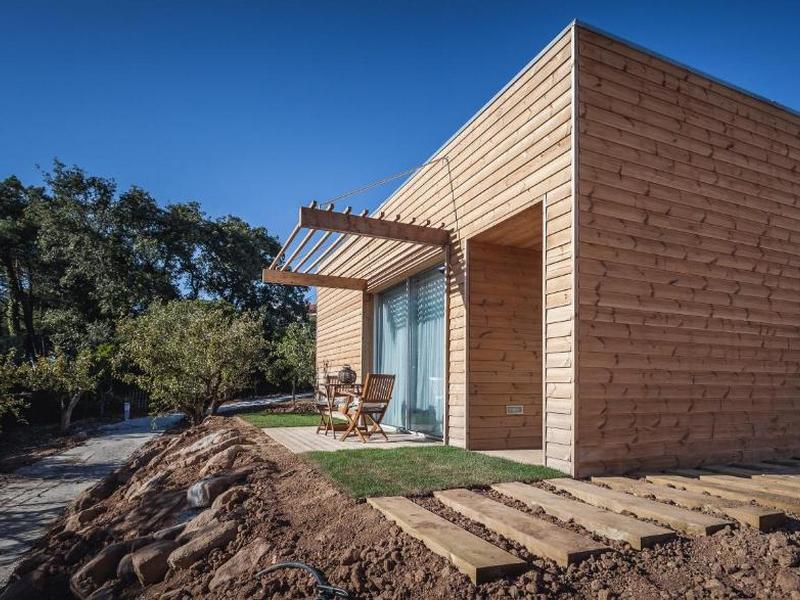
Vale d’ Azenha Hotel Rural & Residences
A hotel with modern, sober lines that pays homage to the apples of Alcobaça. All rooms benefit from a balcony. There is also the option of a large villa, with a full kitchen, that can accommodate pets. Be sure to enjoy the spa, gym and outdoor pool.

 English
English

